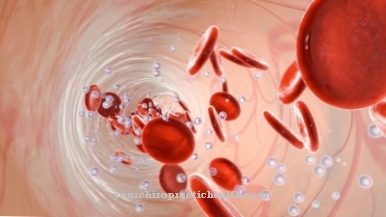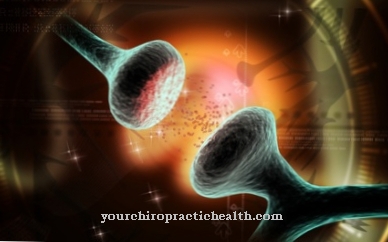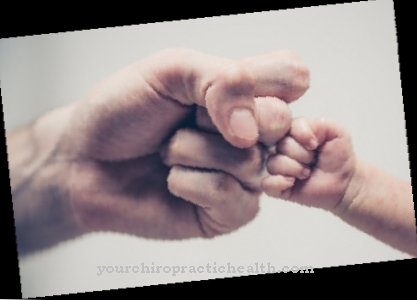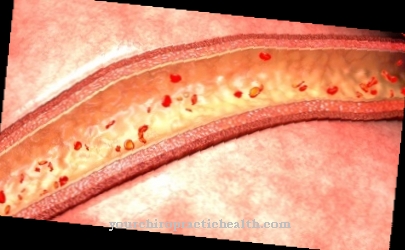The Prohormone convertase catalyzes the splitting off of unnecessary components of proteohormones and neuropeptides. It usually takes effect immediately after the corresponding proteins have been translated. Prohormone convertase-related diseases have been found very rarely.
What is Prohormone Convertase?

Prohormone convertase is a serine protease, which converts just formed proteins from their original form by splitting off certain protein components into their effective form.
When mentioning the prohormone convertase, the proprotein convertase 1 (PC1) is usually meant. It converts many proteohormones and neuropeptides from their proform into the effective form as part of the so-called post-translational modification. An example of this is the catalytic reaction of proinsulin in insulin.
In addition to proinsulin, the proprotein convertase 1 participates in the modification of proopiomelanocortin, prorenin, prodynorphin, proenkephalin, oxytocin neurophysin and prosomatostatin. Immediately after translation (protein biosynthesis), these proteins are changed into the actual effective protein by splitting off protein components. In the process, peptide bonds are broken down.
Since the prohormone convertase is a serine protease, the catalytic center of this enzyme is the so-called catalytic triad. The catalytic triad consists of the three amino acids aspartic acid, histidine and serine. Their amino acid residues are linked to one another via hydrogen bonds. This combination enables them to catalytically break peptide bonds. Catalysis takes place via covalent intermediates and is therefore referred to as covalent catalysis.
The proprotein convertase 1 (PC1) consists of 643 amino acids. A calcium ion acts as a cofactor. Other prohormone convertases are PC2 and PC3 in addition to PC1.
Function & task
The function of the prohormone convertase should first be illustrated using the example of insulin. During the translation of insulin synthesis, preproinsulin is produced consisting of a signal sequence, the B chain, a C peptide and an A chain. The entire molecule is made up of 110 amino acids. After its transport into the endoplasmic reticulum, the signal sequence is split off with the formation of proinsulin, with disulfide bridges being formed between the A chain and B chain. Proinsulin now contains 84 amino acids. Then the C chain is split off by special peptidases (prohormone convertase). The chains that remain are only connected by disulfide bridges. The A chain contains 21 amino acids and the B chain 30 amino acids. Insulin has now formed, which is stabilized in the form of a hexamer by a zinc ion.
Proopiomelanocortin is another possible substrate for the prohormone convertase. Proopiomelanocortin is secreted in the adenohypophysis, hypothalamus, placenta or epithelia and is the precursor of some important peptide hormones. It can be split into 10 different hormones by the prohormone convertase. These include adrenocorticotropin (ACTH), melanocyte-stimulating hormones, corticotropin-like intermediate peptides (CLIP), gammalipotropin or betaendorphin.
The hormones formed are synthesized post-translationally from the prohormone. The opioid peptides enkephalin and dynorphin are also formed by convertases from proenkephalin and prodyphomin. They work as natural pain relievers.
Another active ingredient is the hormone-like renin, which is produced from prorenin by convertases. Renin promotes the formation of vasopressin through various reactions. Vasopressin is an antidiuretic hormone. The hormone oxytocin, in turn, is always produced as oxytocin neurophysin. This is stored in the posterior lobe of the pituitary gland and, if necessary, split into oxytocin and neurophysin using catalysis with prohormone convertase.
The causes for the formation of pro forms of various proteohormones and neuropeptides are diverse. Mostly it is because they are inexpensive forms of storage and transport. However, they must be changed to be effective. The prohormones generally belong to the group of precursor proteins, which also contain proenzymes and precursor structural proteins. All precursor proteins contain additional sequences which affect the activity of the protein in such a way that it becomes inactive. This happens through the influence of these sequences on the conformation of the tertiary structure. When the additional sequences are cleaved off, a sudden change in conformation occurs within the molecule. The entire molecule is activated again.
You can find your medication here
➔ Medicines for muscle weaknessIllnesses & ailments
Prohormone convertase-related diseases are very rare. They usually occur in the case of genetic defects. It is not known why the disorders are so rare. Most gene mutations may then be so severe that they cannot be reconciled with life.
However, a few cases are known where a mutation in the PCSK1 gene has been found. The diseases are associated with severe metabolic disorders. Prohormone convertase I deficiency has been described in two patients alone. This is a 43 year old woman and a little girl. Both patients developed extreme obesity in childhood. Severe hypoglycaemia and elevated prohormone levels of some proteohormones were also noted. At the same time, both patients had absorption disorders in the intestines, which were accompanied by severe diarrhea. The woman also suffered from hypogonadotropic hypogonadism with no menstruation.
The various symptoms are the result of a failure to produce effective hormones from the pro forms of proteohormones. Proinsulin is greatly increased when insulin is low. It is difficult to transform. However, proinsulin already lowers the sugar level in the blood. However, because the concentration is so high, it leads to hypoglycaemia. Other prohormones such as proglucagon or proopiomelanocortin are then also increased. The permanent digestive disorders are caused by the low somastatin level, as prosomastatin is no longer converted into somastatin. Thus, pepsin, gastrin and the pancreatic enzymes can no longer be inhibited.













.jpg)

.jpg)
.jpg)











.jpg)